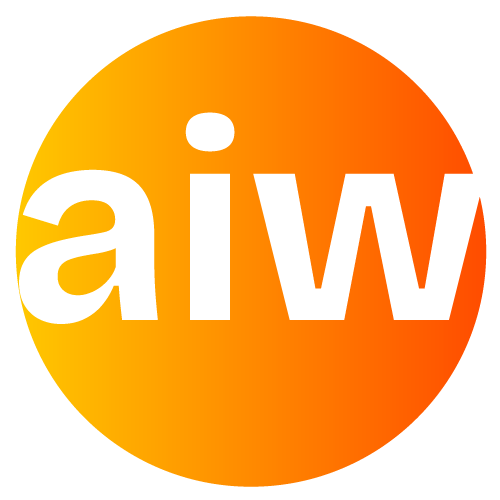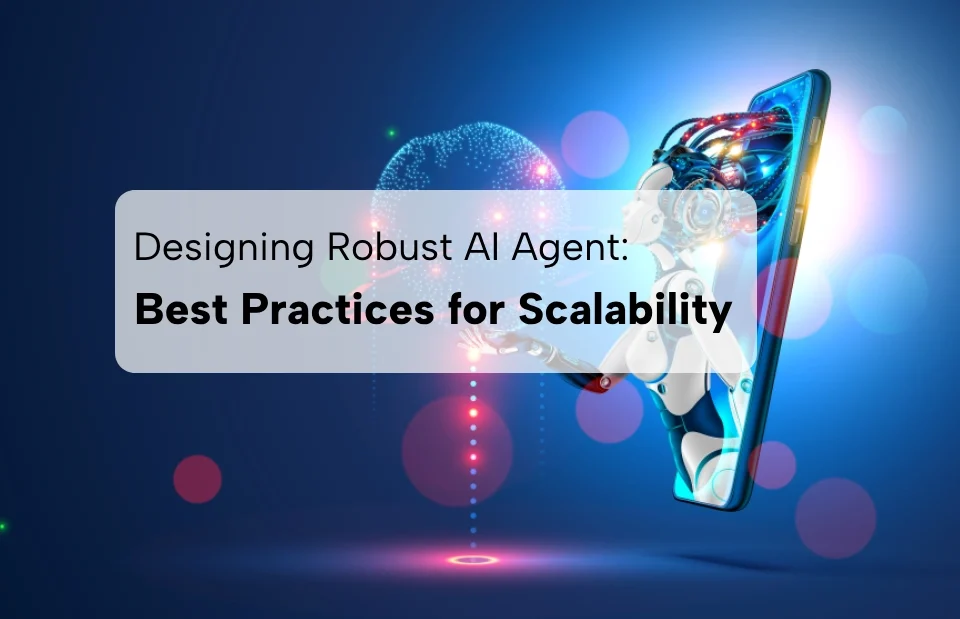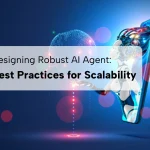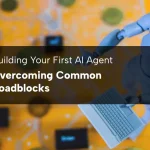All AI agents are all created to be the same. Business leaders who invest on artificial intelligence a thorough understanding of the various types of AI agents can mean the difference between transformational successes and costly mistakes. Each agent type has its own specific capabilities, limitations and business applications, making the choice process an important decision, instead of a mere technical footnote.
Table Of Contents
The 7 types of AI agents for businesses are:
-
Reflex Agents
Reflex agents represent the simplest form of AI agents. They operate on a basic condition-action rule set: if this happens, do that. These agents don’t maintain any internal state or remember past actions—they simply respond to the current input based on predefined rules.
When to use them:
- For straightforward, rule-based processes
- When speed of response matters more than adaptability
- In stable environments where conditions rarely change
- When transparency and predictability are paramount
Business applications:
A financial services company might use reflex agents to flag transactions that exceed certain thresholds. A manufacturing facility could deploy them to monitor equipment and trigger alerts when readings fall outside acceptable parameters. These applications don’t require memory of past events—they need quick, reliable responses to present conditions.
“Reflex agents are similar to skilled workers who know the right way to act in specific scenario, without having to think about it”, says Dhruv Dholakia who is the founder of AI Workflows. “They’re reliable and fast however, they’re only able to manage situations that you’ve explicitly created them for.”
Limitations:
Reflex agents don’t have the ability to deal with situations that require a thorough understanding of the past or predictions of the future state. They’re restricted to the rules that are explicitly written into them.
-
Model-Based Reflex Agents
Model-based reflex agents are a step up in sophistication. Even though they still operate under rules of conditional action. These agents have an internal understanding that explains how their world functions as well as how the actions they take impact the world. This lets them work effectively even when they don’t monitor all aspects of their surroundings.
When to use them:
- In partially observable environments
- When tracking state changes is necessary
- For processes requiring awareness of how actions affect the environment
- When simple rules need context to be effective
Business applications:
Inventory management systems that not only respond to current stock levels but also account for seasonal patterns and supply chain dynamics. Customer service systems that maintain context throughout a conversation, rather than treating each message in isolation.
A retail company might implement model-based reflex agents to adjust pricing based not just on current inventory levels but also on how quickly items are selling, upcoming promotions, and competitor pricing trends.
Limitations:
While more capable than simple reflex agents, model-based agents still lack true goal-directed behavior and learning capabilities.
-
Goal-Based Agents
Goal-based agents represent a significant advancement. These agents consider the future consequences of their actions and make decisions aimed at achieving specific goals. Rather than just responding to the current state, they ask: “What will happen if I do this? Will it help me reach my goal?”
When to use them:
- For complex problem-solving requiring planning
- When optimization toward specific outcomes matters
- In environments where multiple paths to success exist
- When agents need to make trade-offs between competing objectives
Business applications:
Business applications Supply chain optimization systems, which plot optimal routes as well as schedules. Project management assistants assist teams in allocating the resources and schedule tasks to finish on time.
A logistics company might employ goal-based agents to reroute shipments in real-time based on weather conditions, traffic patterns, and delivery priorities–constantly working toward the goal of on-time delivery at minimum cost.
Limitations:
Goal-based agent require massive computational resources to analyze possible futures. They also need clearly defined objectives, which are difficult to define for complicated business issues.
-
Utility-Based Agents
Utility-based agents complement goal-based agents by adding a utility function, which is a method to determine how “good” a particular state is. Instead of merely accomplishing goals, these agents seek to maximize utility and efficiency, which allows them to make complex trade-offs among competing goals.
When to use them:
- When multiple factors must be balanced
- For optimization problems with competing priorities
- When goals have different degrees of desirability
- In decision-making systems requiring nuanced judgments
Business applications:
Systems for managing financial portfolios that are able to balance return and risk. Health scheduling software that are optimized for the outcomes of patients, provider preferences, and constraints on resources.
An Airline could use the services of utility-based agents to control prices for seats, which balances immediate revenues against long-term customers satisfaction and positioning. The utility function weighs the demand for seats prices, competitive pricing, loyalty status of customers and popularity of the flight.
“Utility-based agents are excellent for complex business decisions where there’s no perfect answer—just better or worse trade-offs,” explains Dholakia. “They make decisions the way an experienced executive might, weighing multiple factors rather than following rigid rules.”
Limitations:
Defining appropriate utility functions can be challenging and may require significant domain expertise. The systems may also be a challenge to explain or evaluate.
-
Learning Agents
Learning agents alter their behavior based on their experience. Instead of relying on pre-programmed information, these agents are able to improve through the feedback they receive and observation. They may find new patterns, enhance their models internally and improve their decision-making abilities.
When to use them:
- In changing environments
- For problems where optimal solutions aren’t known in advance
- When personalization matters
- For tasks that benefit from continuous improvement
Business applications:
Recommendation systems that learn customer preferences over time. Predictive maintenance systems that improve their ability to identify potential equipment failures based on historical data.
An e-commerce company selling online could implement learning agents to personalize product suggestions, with the system slowly improving its understanding of the customer preferences based on browsing behavior, purchases, as well as explicit feedback.
Limitations:
Learning agents require significant data to train effectively. They may also exhibit unexpected behaviors as they learn, necessitating careful monitoring and guardrails.
-
Multi-Agent Systems
Multi-agent systems comprise multiple agents that work together, usually specialising in various aspects of a complex problem. They can display simplified collective behaviors through agent interaction and coordination.
When to use them:
- For complex workflows spanning multiple domains
- When different expertise areas must be combined
- For systems requiring built-in redundancy
- When problems naturally decompose into sub-problems
Business applications:
Enterprise workflow automation spanning multiple departments. Smart manufacturing systems with specialized agents for different production stages.
A customer service platform might employ multiple specialized agents—one handling appointment scheduling, another managing account inquiries, and a third handling technical support—with a coordinator agent routing inquiries and managing handoffs between specialists.
Limitations:
Coordination between agents adds complexity. These systems can be challenging to design, test, and debug due to emergent behaviors and interaction effects.
-
Hybrid Agents
Hybrid agents combine characteristics of multiple agent types to leverage their respective strengths. For example, a system might use reflex responses for time-sensitive decisions while employing learning capabilities for long-term optimization.
When to use them:
- For complex business problems with multiple facets
- When combining fast response with adaptability
- To balance immediate needs with long-term learning
- When different aspects of a problem require different approaches
Business applications:
Advanced trading systems that combine rule-based risk controls with learning-based market analysis. Customer engagement platforms that use reflex agents for immediate responses and learning agents for personalization.
A healthcare monitoring system might use reflex agents to trigger immediate alerts for critical patient conditions while employing learning agents to gradually improve detection of subtle warning signs based on historical outcomes.
Limitations:
Hybrid systems introduce additional complexity in design and maintenance. They require careful integration to ensure different agent components work together effectively.
Choosing the Right Agent Type for Your Business Needs
Selecting the appropriate AI agent architecture depends on several key factors:
- Problem complexity: Simpler problems may be adequately handled by reflex agents, while complex optimization challenges might require utility-based or learning agents.
- Available data: Learning agents need substantial data to train effectively. Without sufficient data, model-based or goal-based agents might be more appropriate.
- Explainability requirements: Some industries and applications require transparent decision-making processes. Reflex and model-based agents typically offer greater explainability than learning agents.
- Time constraints: Reflex agents provide the fastest responses, while more sophisticated agents may require additional processing time.
- Adaptability needs: In rapidly changing environments, learning agents offer significant advantages through their ability to adapt to new conditions.
The table below summarizes key considerations:
| Agent Type | Speed | Adaptability | Explainability | Data Requirements | Complexity |
| Reflex | High | Low | High | Low | Low |
| Model-Based | High | Low | High | Medium | Medium |
| Goal-Based | Medium | Medium | Medium | Medium | Medium |
| Utility-Based | Medium | Medium | Medium | Medium | High |
| Learning | Medium | High | Low | High | High |
| Multi-Agent | Varies | Medium | Low | Varies | High |
| Hybrid | Varies | High | Varies | Varies | High |
Industry-Specific Examples
Different industries tend to favor certain agent types based on their particular requirements:
Financial Services:
- Reflex agents for fraud detection and compliance monitoring
- Utility-based agents for portfolio management
- Learning agents for credit risk assessment
Healthcare:
- Reflex agents for critical alerts and medication management
- Goal-based agents for resource scheduling
- Learning agents for diagnostic assistance
Manufacturing:
- Model-based agents for production monitoring
- Goal-based agents for supply chain optimization
- Multi-agent systems for integrated production lines
E-commerce:
- Learning agents for product recommendations
- Utility-based agents for dynamic pricing
- Hybrid agents for customer service platforms
Conclusion
Understanding the various types of AI agents allows business executives to make informed choices about AI implementation. The ideal agent architecture will dramatically impact efficiency, adaptability and ultimately, the business value.
“Your processes are unique. Your AI should be too,” says Dholakia. “The most successful AI implementations match the right agent type to the specific business context, rather than forcing a one-size-fits-all approach.”
When businesses are beginning the AI implementation, it typically is sensible to start with simpler agents for clear-cut problems. Later, they can introduce more advanced systems as experience and familiarity with AI improve. This incremental approach lets organizations to develop internal knowledge, while delivering quantifiable results for their business at every step.
Need help identifying the right AI agent type for your needs?
AI Workfllow specializes in matching business requirements to appropriate agent architectures, ensuring optimal performance and ROI. Let’s talk.

Dhruv Dholakia has spent over a decade helping enterprises streamline operations through workflow automation and digital transformation. With a strong belief in building purposeful tech, he now focuses on the next frontier—custom AI solutions and Agentic AI. For Dhruv, AI isn’t just a buzzword; it’s a tool to solve real-world problems and create lasting impact. He’s passionate about making AI accessible, responsible, and truly useful for people, teams, and businesses navigating today’s fast-changing world.





